ASUS ROG Ally review: The best way to game on the go
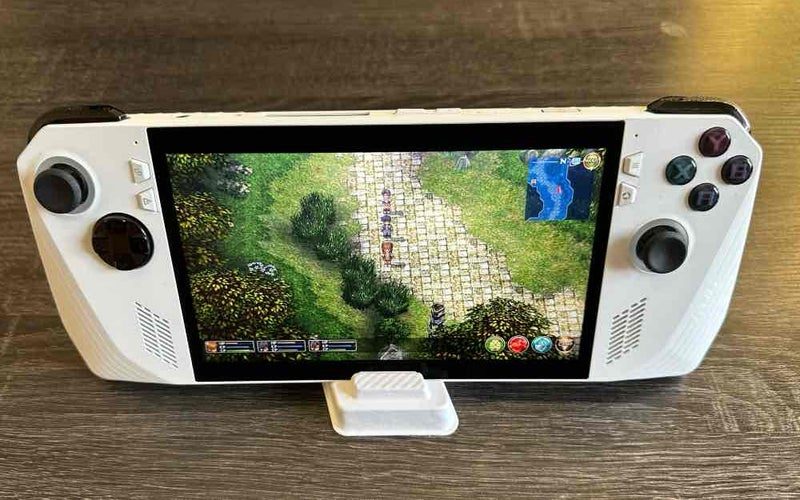
We may earn revenue from the products available on this page and participate in affiliate programs. Learn more ›
The radical success of Valve’s Steam Deck and the Nintendo Switch has proven a deep appetite for handheld gaming exists, and competitors are popping up left and right in an attempt to take a piece of that pie. ASUS is the latest company to step up to the plate, and if it aimed to create a faster, nicer-looking, better-feeling Steam Deck, the ROG Ally is a resounding success.
The handheld PC game console, available for preorder now and will launch June 11 for $599, is fast enough to play many of the latest titles, offers a surprising amount of customization, and achieves surprising stability for a first-generation piece of hardware. Yet what holds the ROG Ally back from near-perfection is the one piece of the puzzle it couldn’t fully control: Windows.
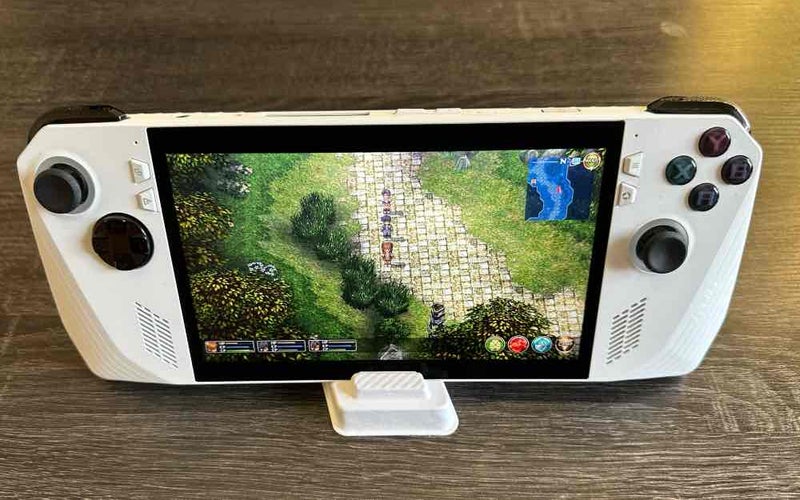
Brandt Ranj / Popular Science
SEE IT
Overview
- The ASUS ROG Ally is the first mainstream Steam Deck competitor, and on a technical level, it bests Valve’s popular gaming handheld in almost every way.
- The handheld’s Windows system is more versatile than a streamlined operating system like SteamOS but also increases power consumption and complexity.
- For serious PC gamers who favor customizability and power, the ROG Ally offers the best balance of performance and price.
Pros
- Incredible price
- Excellent performance
- Good battery life
- Ergonomic design
- Smooth-feeling analog sticks
- Expandable storage
- Surprisingly full-sounding speakers
Cons
- Operating system not designed for handheld gaming
- Can be complex to access certain settings
Verdict: The ROG Ally is the handheld gaming system to beat if you can get over the pain of Windows gaming on a portable device.
The ASUS ROG Ally build
I’ve been playing handheld game consoles since the original Game Boy, and I was immediately smitten with how the ROG Ally looked and felt out of the box. Its 7-inch screen is the same size as my Switch OLED edition and the Steam Deck. ASUS’ display is 1080P and supports refresh rates up to 120Hz instead of the 720P 60Hz panel on Nintendo and Valve’s systems. The difference in sharpness and fidelity compared to the Switch was noticeable and made up for the fact that the ROG’s great-looking LCD display isn’t quite as vibrant as an OLED screen.
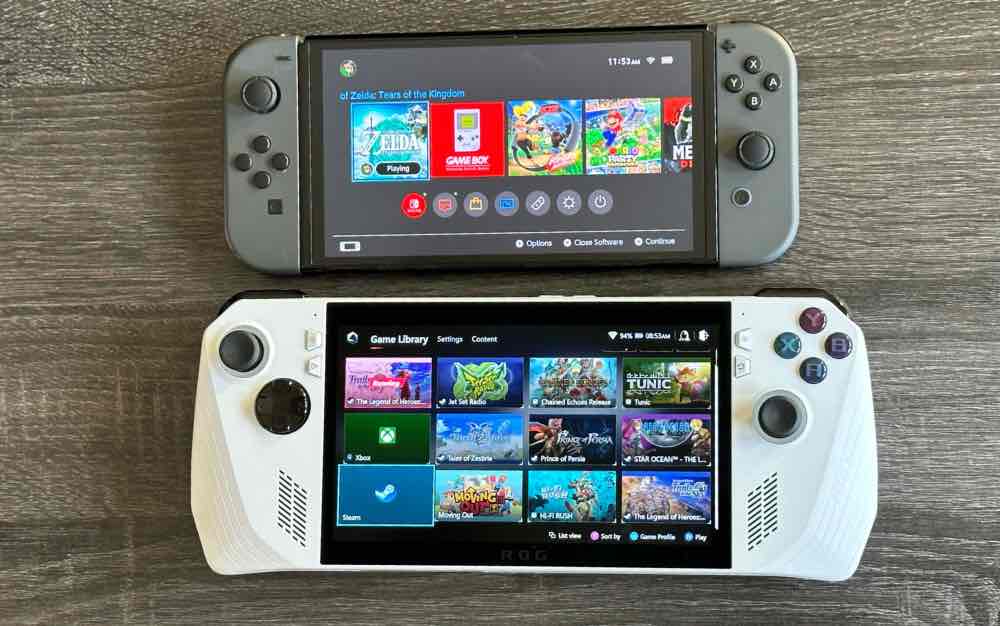
An analog stick and directional pad flank the handheld system’s screen on the left side, while an analog stick and four face buttons are on the right. A pair of buttons and triggers on top of the handheld are complemented by two on the system’s backside. A headphone jack, volume controls, and power button line the system’s top, along with two vents for the fans.
This is more or less the same button configuration popularized by the Xbox 360 in 2005, which made the ROG Ally feel familiar before I even booted up a game. Four additional buttons give you quick access to common actions, like bringing up the ROG Ally’s performance options and going to a game-select screen. More importantly, the handheld feels great in hand. The angular cut-outs on the front of the device make it easy to grip, while the curves on the back contoured to my hands. ASUS designed the ROG Ally to feel good whether you’re holding it or have it propped up on a desk, and the result is a home run where ergonomics are concerned.
I was pleased—though not surprised—to see the handheld’s USB-C charging port, which ASUS opted to put on the top rather than the bottom of the system. The mass adoption of a single charging port for most electronics is one of the best recent advancements in consumer tech. The ROG Ally’s MicroSD card slot, which can be used to expand its storage to hold more games easily, is also located on top of the system, which makes it immediately and easily accessible without opening the console’s case. In general, my impressions of the hardware have been very positive.
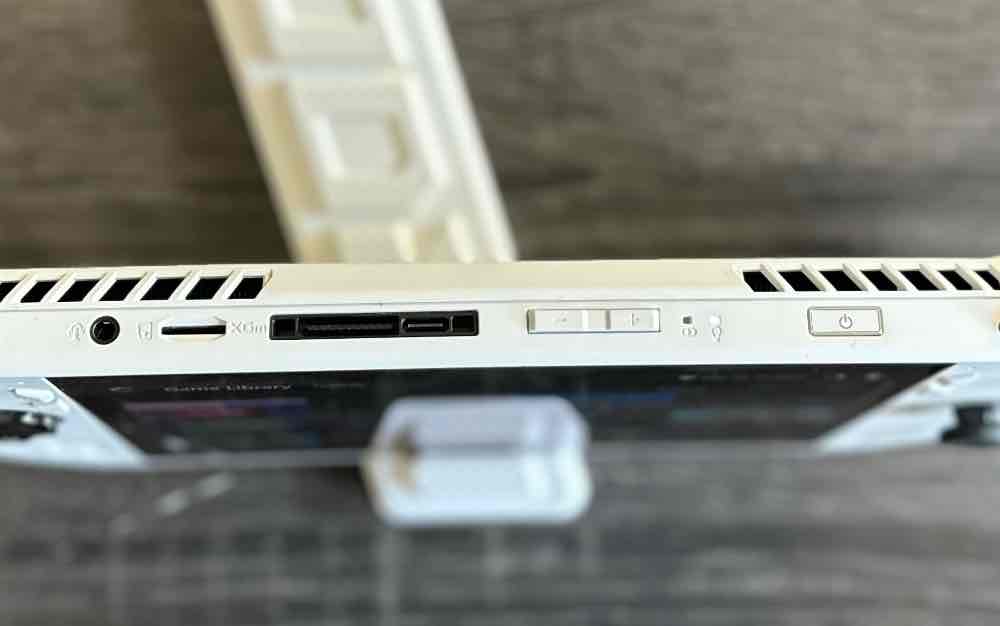
The ASUS ROG Ally setup
ASUS did its best to ensure the ROG Ally’s setup process was as easy as possible. I was greeted with a familiar Windows 11 lock screen. Tapping the OK button—my review unit came pre-configured with a user account but no password—brought me to Microsoft’s desktop. Preinstalled software called ASUS Armoury Crate launched within seconds and brought me to a user-friendly screen where I could log into my Steam and Xbox accounts to download games from their respective digital libraries. The only real roadblock during my setup was navigating to Windows’ WiFi settings and typing in my password.
All my downloaded titles appeared as icons in Armoury Crate, making them easy to launch. This system isn’t as slick as the Switch or Steam Deck’s user interface, but those systems are only designed for gaming. The ROG Ally runs a full version of Windows, which means it could be hooked up to a monitor and be used for Google Docs and the Adobe Creative Cloud suite of applications in addition to booting up the latest PC games.
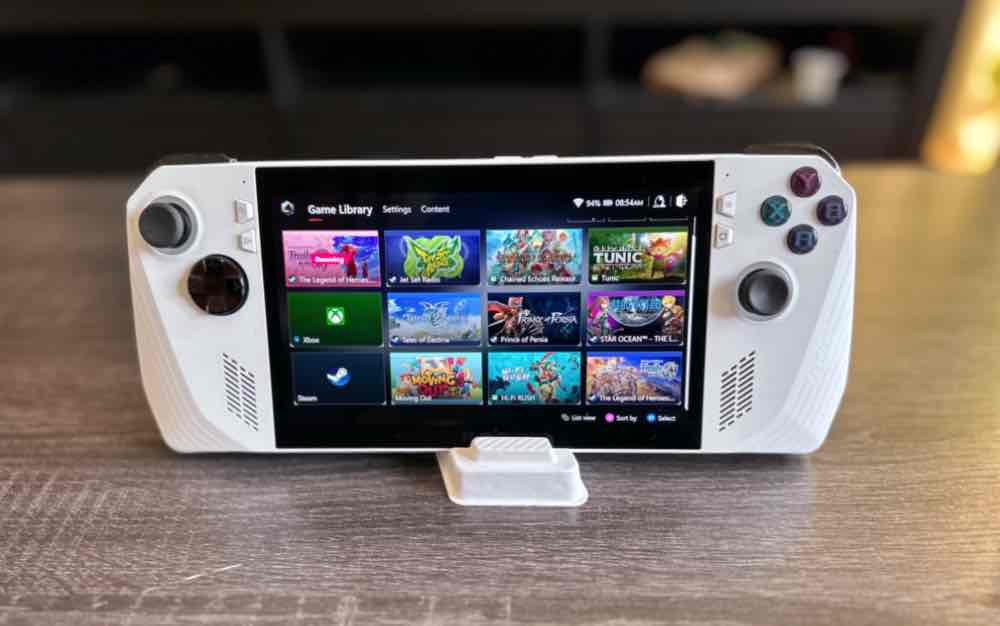
Overall, the ROG Ally’s user interface is pretty user-friendly. However, it took a little time to get the hang of downloading games and navigating the Xbox Game Pass portal, which is annoying to use on a PC without a keyboard and mouse. Switching the ROG Ally from handheld to desktop mode allowed me to replicate the functionality of a mouse with the right analog stick moving the cursor, but the experience was still kind of clunky. Steam was designed to be used natively with a game controller, and I had no issues there.
Even the ROG Ally’s control panel, which can be toggled with a button press, was neatly organized. This settings menu allows you to switch between quiet, performance, and turbo modes, which automatically ratchet up the system’s processor to the detriment of its battery life. Other settings include changing the screen’s resolution between 720P and 1080P, adjusting the display’s brightness, switching between handheld and desktop modes, and other common controls. It’s clear ASUS wanted to make the ROG Ally as accessible as possible, and it succeeded.
The ASUS ROG Ally performance
I’ll be the first to admit my PC gaming needs are pretty basic, but the ROG Ally still exceeded my expectations. The older and indie titles like The Legend of Heroes: Trails In The Sky, Tales of Zestiria, Hi-Fi Rush, and Tunic all ran without a hitch using the handheld’s quiet setting. I tried more resource-intensive 3D games during my demo at an ASUS event two weeks before my review unit arrived, and those ran great, too—albeit only when the battery-sucking turbo setting was enabled. The only time I ran into trouble was trying to play Jet Grind Radio, which refused to launch no matter how many times I tried playing it. I deleted and re-downloaded it in case of a weird one-time bug, but the system didn’t play nice with SEGA’s high-octane, early-2000s title.
ASUS equipped its handheld with an eight-core Z1 processor, designed in-house explicitly for gaming. The system’s lower-end model comes with the standard Z1, which offers 2.9 teraflops of graphical performance, while the premium system’s Z1 Extreme tops out at 8.6 teraflops. There’s only a $100 difference between both configurations, and I recommend going with the higher-end one if you primarily play PC games. Casual users like myself could get away with the entry-level version without a hitch. Both ROG Ally handheld models are more powerful than the Steam Deck and blow the six-year-old Nintendo Switch out of the water.
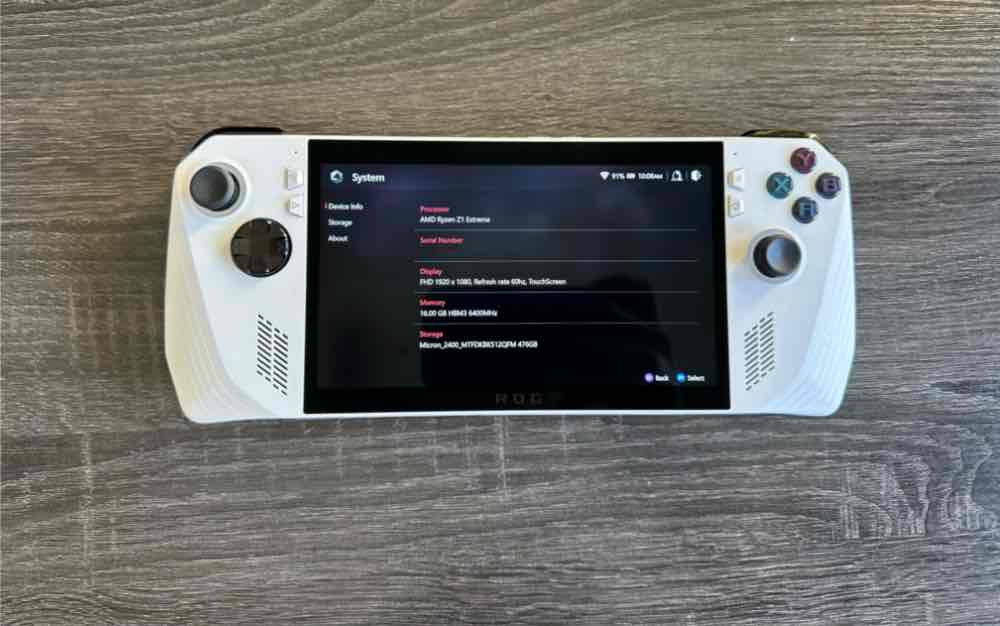
I didn’t notice any stuttering or dropped frames when playing my games, which I expected, given their modest system requirements. Still, the experience of playing games on the ROG Ally was so good it felt natural to pick up the system and play. I could hit the power button mid-game, knowing I could return to it immediately once it was time to begin my next play session. The benefit of playing smaller titles with the screen brightness at roughly 75% was I could extend the battery life pretty far. I could get about four hours of gameplay per charge, which has more to do with the inefficiency of Windows than the ROG Ally’s battery size or the energy consumption of my games. There’s simply a lot of overhead to run a game on Windows, which is a shame.
I was happier with the fact that I could play the system for several hours at a time without my hands or arms feeling fatigued. The system’s angled shape made resting the system on my thighs while curled up on the couch feel as natural as holding it in front of me. The system’s 1.34-pound weight makes it feel appreciably lighter than the Steam Deck, which comes in at 1.47 pounds. In handheld gaming, every tenth of a pound counts and can make the difference between putting the system down because you want to and pausing your game session out of necessity.
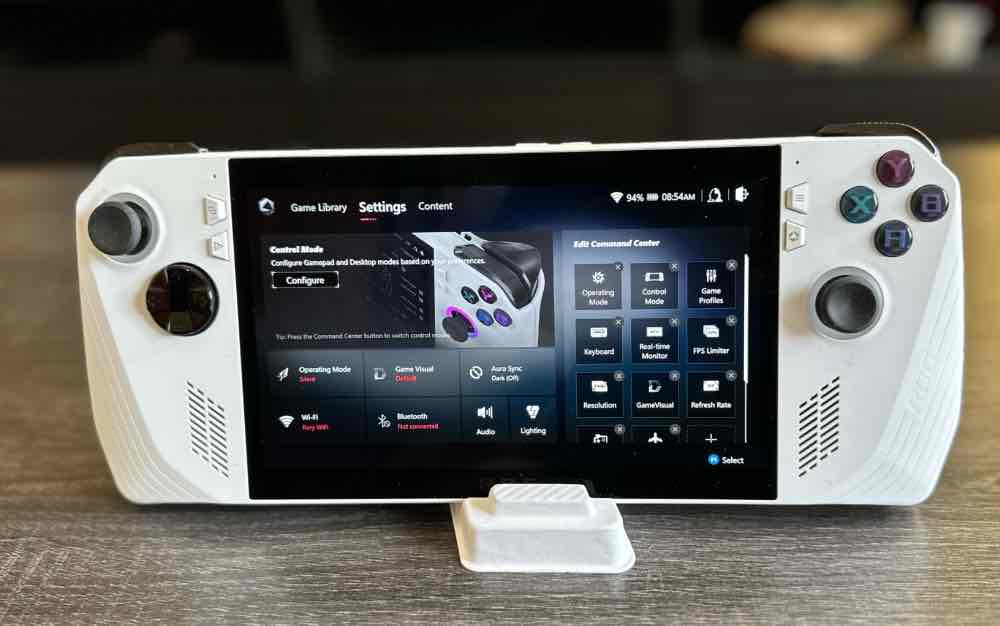
The ROG Ally’s Z1 processor, 16GB of LPDDR5 RAM (memory), 4GB of VRAM (video memory), and 512GB of storage gives the handheld enough overhead to future-proof it for a few years. The reality is playing a handheld PC will always be limiting because there’s only so much space for components and cooling. That said, it’s possible to play many of the latest games at high settings if you’re okay with limiting your battery life or keeping it plugged into a power source all the time.
The ASUS ROG Ally software
Every part of the ROG Ally’s experience that ASUS had direct control over is a grand slam. It’s the platonic ideal of a modern handheld gaming system, and I’m gobsmacked that the company got so much right on the first generation of a product. We’re talking original iPhone levels of hardware polish, and the design team should feel proud of the hardware’s performance, given its incredibly reasonable price.
Unfortunately, the system is hamstrung by Windows, the dominant operating system for PC gaming—and computers in general. It’s laudable that ASUS designed its Armoury Crate software to make gaming on the ROG Ally possible, but there’s no denying the system runs on a general-purpose operating system. Both the Steam Deck and Nintendo Switch boot directly into software explicitly designed for games that are optimized for optimal performance. There are no unnecessary background tasks draining power and resources—the streamlined systems can download and play games, that’s it.
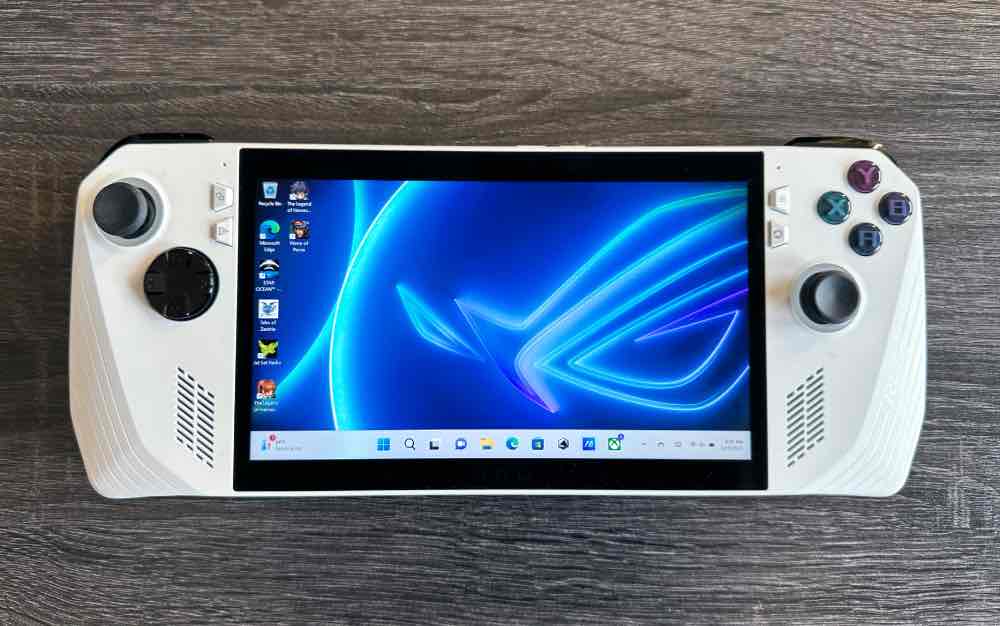
There are problems ASUS can’t address or fix because of Windows, even if the versatile operating system opens the door to turning the ROG Ally into an emulation powerhouse for nostalgic gamers who want to relive their childhood alongside playing the latest PC games as they come out. But the occasional awkwardness of navigating an operating system designed for traditional peripherals rather than analog sticks and buttons was a reminder of the ROG Ally’s main limitation.
ASUS’ options to address this issue are limited. It could develop its own operating system like Valve’s SteamOS, but that would take several years and untold resources to accomplish with very limited upside. it could shop the software around to other handheld PC makers, but that would mitigate its market advantage. The company could partner with Valve to launch the system with SteamOS installed. However, that’d require them to get the operating system up and running on custom-designed hardware and disallow gamers from playing titles on Xbox Game Pass or similar streaming services.
The ASUS ROG Ally vs. Valve’s Steam Deck
Many handheld PC gamers will be deciding between the Steam Deck and a Windows-based handheld for their portable gaming; honestly, there’s no right or wrong choice. The Steam Deck has worse tech specs—most notably a sub-1080P display—and a bigger chassis, but the streamlined nature of SteamOS makes it easier to pick up and play. The ROG Ally is svelter and more powerful, but you have to deal with the complexities of Windows and its constant additional power drain. If you’re a serious PC gamer, go with the ROG Ally; if you’re more casual, the Steam Deck is the better choice. If you want to play The Legend of Zelda: Tears of the Kingdom, well, get the Nintendo Switch OLED.
Final thoughts
The reason I keep harping on the downsides of Windows is that the ASUS ROG Ally is a nearly perfect piece of hardware. It’s better than all of its mainstream direct competitors and undercuts boutique handheld PC makers on price to the point of absurdity. Let me be clear: If you want to play PC games on the go, this is your best option by a long shot. But picking up the ASUS ROG Ally means dealing with the compromises of building a game console running general-purpose software. ASUS has done all it can to make the user experience as seamless as possible, but it’s hard not to think about the grand slam the company could have had if it had complete control over the hardware and software experience.










